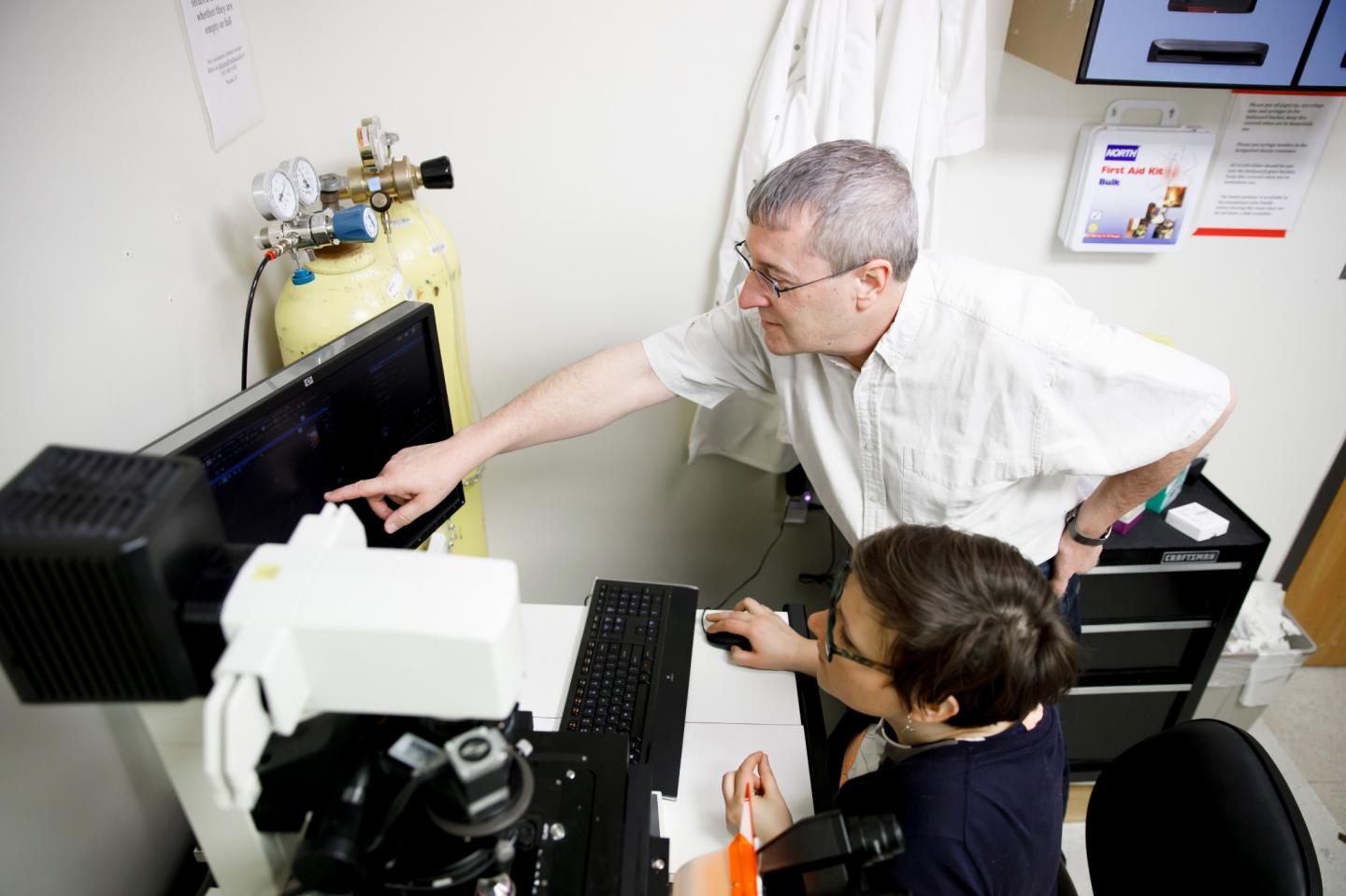A new study from Indiana University shows bacteria evolved new genes from viral attackers, a discovery that could help advance research on topics such as bacterial resistance

Credit: James Brosher, Indiana University
Researchers at Indiana University are reporting a previously unknown way that bacteria can develop new genes to evolve and adapt to threats, an insight that might advance efforts against “superbugs.”
The study, published today online in the journal Current Biology, describes the first known evidence of bacteria stealing genetic material from their own worst enemy, called “phages,” and transforming it to survive. Phages are bacterial viruses so lethal that they’re estimated to kill about half of the bacteria in the world’s oceans every two days.
“Just like we’ve got this ongoing war against bacteria, bacteria are fighting a constant war against bacteriophages, or ‘phages,'” said the study’s lead author, Amelia Randich, a postdoctoral researcher in the IU Bloomington College of Arts and Sciences’ Department of Biology. “Our work found that a gene once used by phages as a weapon against bacteria is now used by bacteria to grow and divide correctly.”
Watch a video of bacteria-killing phases in action
The gene is SpmX, commonly known as “Spam X.” Knowledge about this gene has been pioneered by scientists in the lab of Yves Brun, IU Distinguished Professor of Biology, who is the senior author on the study. Randich is a member of Brun’s lab at IU.
“This study shows bacteria’s ability to transform an implement of war into a tool to create life,” Randich added. “It’s like watching evolution beat a sword into plowshare.”
The work advances knowledge about how bacteria create new genes from external genetic material. In this case, a transformation that likely occurred a billion years ago could help people today gain greater control over bacteria.
This control could translate into new antibiotics, or other advances in the use of bacteria. For example, drug makers commonly use bacteria to produce biological compounds such as insulin. Research is also being conducted on the use of bacteria to recycle plastics or conduct electricity.
Like human viruses, bacteriophages inject their own genetic material into cells, hijacking their victims’ molecular machinery to copy their own genes, producing new virus particles that break open and kill the cells. This process is called lysis, and the toxic enzymes that produce cell death are called lysins.
SpmX is found in Caulobacterales, a bacterial order whose members grow long appendages called stalks. It appears at the location in the bacteria’s cell where the stalk will grow and “recruits” proteins that play roles in growing the stalk.
Based upon their analyses — which included using bioinformatics to compare bacterial and phage genes and using X-ray crystallography to create 3D models of SpmX and related protein structures in phages — IU researchers identified similarities between SpmX and lysin-producing protein sequences in bacteriophage. Specifically, the analysis found that the part of the gene used by SpmX to find the right place to grow stalks in Caulobacterales is related to the toxic lysins used by phages to break cells.
Moreover, the team found that the gene had changed, but only slightly. The amino acids located in a specific region of the enzyme that phage use to break cell walls had lost their ability to crack open cells in Caulobacter. Instead, they appeared to help guide SpmX to the future position of the stalk.
“Even though it was very, very similar to phage genes, we found a specific mutation in Caulobacter — in the area of the protein used to cut through the bacterial cell wall — that reduced its efficiency,” Brun said.
“Because the sequence was so closely related to the genes in phage, you would expect it to have the same function: to cut the cell wall,” he added. “But instead its activity was reduced to the point where it no longer killed the bacteria. It’s quite remarkable.”
###
Other authors on the paper are David T. Kysela of IU and Cécile Morlot of the University of Grenoble in France. This work was supported in part by the National Institutes of Health, the U.S. Fulbright Scholar Program and the European Research Infrastructure Consortium.
Media Contact
Kevin D. Fryling
[email protected]
Original Source
https:/
Related Journal Article
http://dx.




